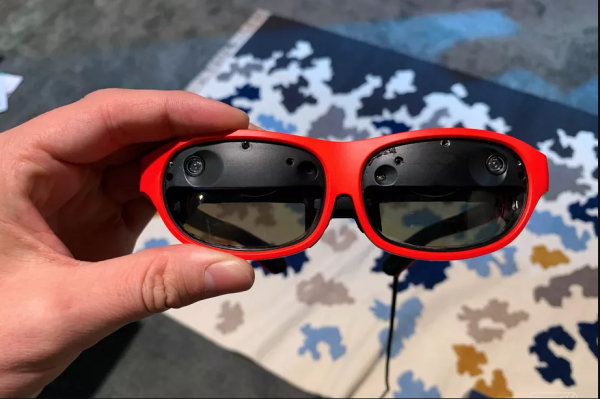Qualcomm to Work with OEMs for 5G Smartphone-Powered VR and AR Headsets
World’s leading chipmaker Qualcomm is promoting its plans to create a new platform for virtual reality and augmented reality headsets that will rely on 5G and be powered by smartphones. The new mixed reality device category will bring together the computing power of the Snapdragon 855 platform and the speed of the 5G networks on smartphones to create an Extended Reality or mixed virtual and augmented reality experiences which will provide users with six degrees of freedom tracking.
The new initiative was announced during this year’s Mobile World Congress (MWC) in Barcelona. Qualcomm expects some of the OEMs such as Pico to begin incorporating the platform this year into its devices. Qualcomm will also promote the platform with various third-party partners such as Sprint, Acer and LG.
The platform will involve tethering the headsets to the smartphones through a USB-C connection which will drive the high-res displays for the platform and most of the content will be streamed through the 5G connection. The company expects the system to help boost the uptake of phone-powered virtual reality and augmented headsets this year.

The chipmaker will make an XR-optimized certification programs for the various phones that are made with its Snapdragon 855 processors. Qualcomm will thus work with any headset brand in the ecosystem. Only two viewers which were unveiled at this year’s CES are currently supported namely, the virtual reality headset Acer OJO and the mixed reality glasses Nreal Light. More devices are expected to be supported later in the year via an existing accelerator program aimed at boosting the development of mixed reality (XR) headset. These include some device from the virtual reality company Pico.
Qualcomm has not specified any reference design that its OEM partners could rely on, a break from the earlier releases where it revealed a VR-specific ecosystem. Some of the supported devices are quite different. A case in point is the Nreal Light and the Acer OJO which are not quite the same products. The Acer OJO was in fact first promoted as a Windows Mixed Reality product. The common theme among these disparate virtual reality and augmented reality viewers is that they will be built with their own displays and be capable of running apps via a phone over USB-C cable thereby capitalizing on the benefits of both mobile and tethered headsets.
This concept first debuted with an LG VR 360 unveiled at the MWC16 which was a USB-C-tethered virtual reality headset. The latest iteration now offers users the advantage of 5G, providing wearers the benefit of streaming high quality media. These devices will therefore provide wearers a superior performance thanks to 5G making them more attractive than their previous counterparts.
Mobile XR is at the frontiers of innovation and is one of the most promising emerging technologies which is likely to revolutionize our experiences in the future. As a business opportunity and technological challenge for Qualcomm, mobile mixed reality is likely to become as a big and important as the smartphone market has been over the past few years of mobile revolution. Qualcomm is currently putting emphasis on the deployment of 5G smartphones as a vehicle for augmenting the rapidly expanding immersive experiences.
Various network service providers have already given Qualcomm’s XR efforts a stamp of approval. These include the Swiss telecom company Swisscom, Australian carrier Telstra, the US telecom company Sprint and the Korean carriers LG U+ and SK Telecom. Qualcomm has suggested that these carriers and the OEM partners will derive great benefits from having the XR hardware that will fully leverage the benefits of 5G networks.
The 5G networks are currently in the early stages of deployment and it will be awhile before users begin buying 5G phones. 5G is currently nothing more than just a label rather than a real network upgrade that users can access. Qualcomm has also not put forward a strong case for users to purchase the Nreal and Acer headsets during the launch.
When it comes to virtual reality, users have access to a large catalogue of video apps and games to experience. Augmented reality on the other hand is a largely untested territory in the mass market. Some of the more sophisticated AR devices such as the HoloLens are more geared towards the enterprise market while the consumer-facing AR apps are still struggling. Even the more self-contained phone-powered glasses are still quite clunky as they will still need display hardware and in many cases cameras.
Qualcomm says that its first-generation of AR glasses will be a worthy buy for a hands-free screen use in places where there isn’t enough space to pull a smartphone such as in subways. The Nreal glasses received accolades during the CES thanks to their unobtrusive design as well the quality of the display. However, being a $1000 device, they are still a relatively niche use-case device. Qualcomm did not provide a price range for its mixed reality platform.
However, the idea of Qualcomm working with partners that are leading players in the industry to roll out diverse devices that will be compatible with various new generations of Android phones is a welcome development in the industry. Both VR and AR are expected to see a major shot in the arm thanks to the increased bandwidth that will be available in the 5G networks.
https://virtualrealitytimes.com/2019/03/01/qualcomm-to-work-with-oems-for-5g-smartphone-powered-vr-and-ar-headsets/https://virtualrealitytimes.com/wp-content/uploads/2019/02/Qualcomm-working-with-OEMs-for-smartphone-tethered-AR-and-VR-headsets-600x399.jpghttps://virtualrealitytimes.com/wp-content/uploads/2019/02/Qualcomm-working-with-OEMs-for-smartphone-tethered-AR-and-VR-headsets-150x90.jpgAR HeadsetsHardwareVR HeadsetsWorld’s leading chipmaker Qualcomm is promoting its plans to create a new platform for virtual reality and augmented reality headsets that will rely on 5G and be powered by smartphones. The new mixed reality device category will bring together the computing power of the Snapdragon 855 platform and the...Sam OchanjiSam Ochanji[email protected]EditorVirtual Reality Times - Metaverse & VR
